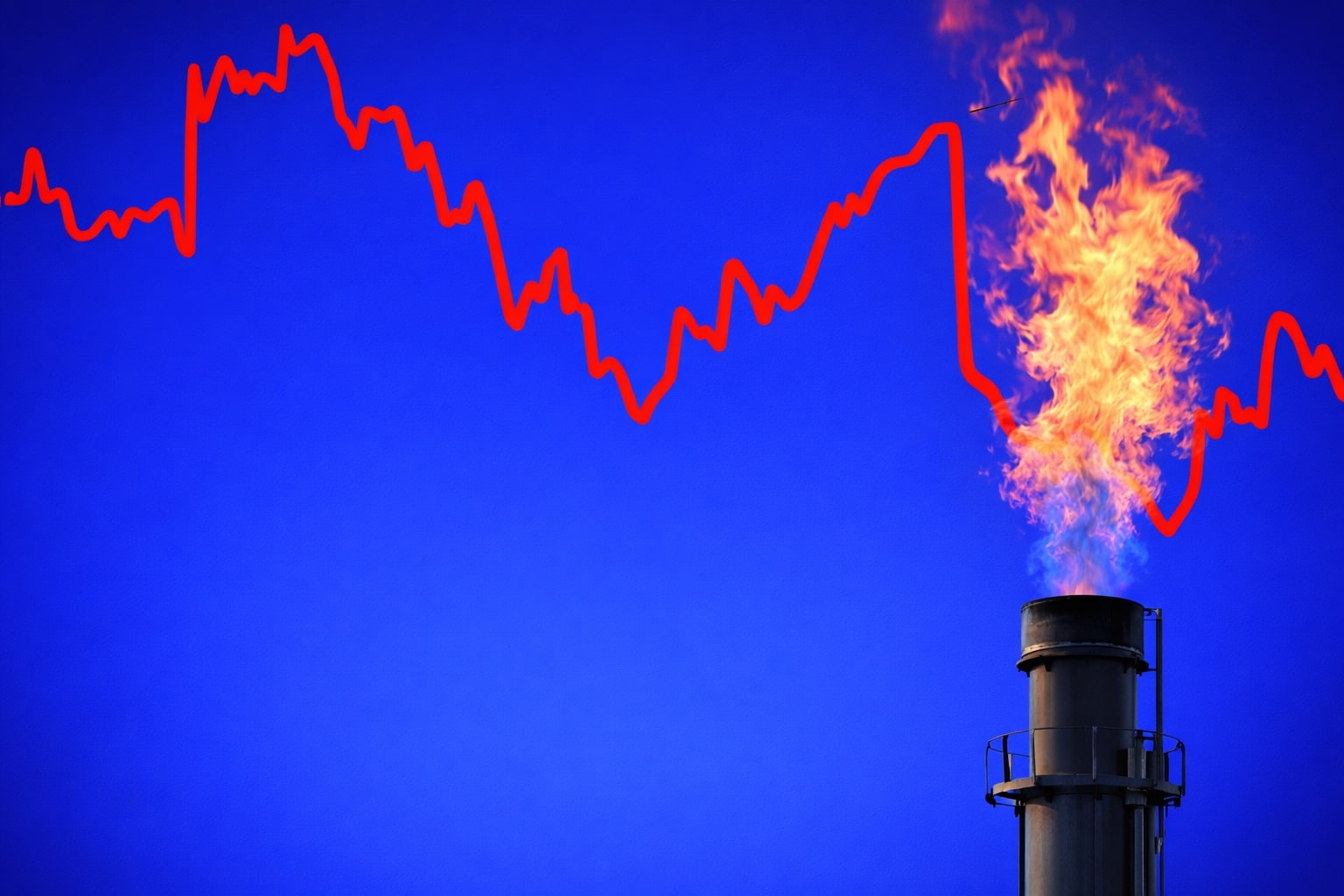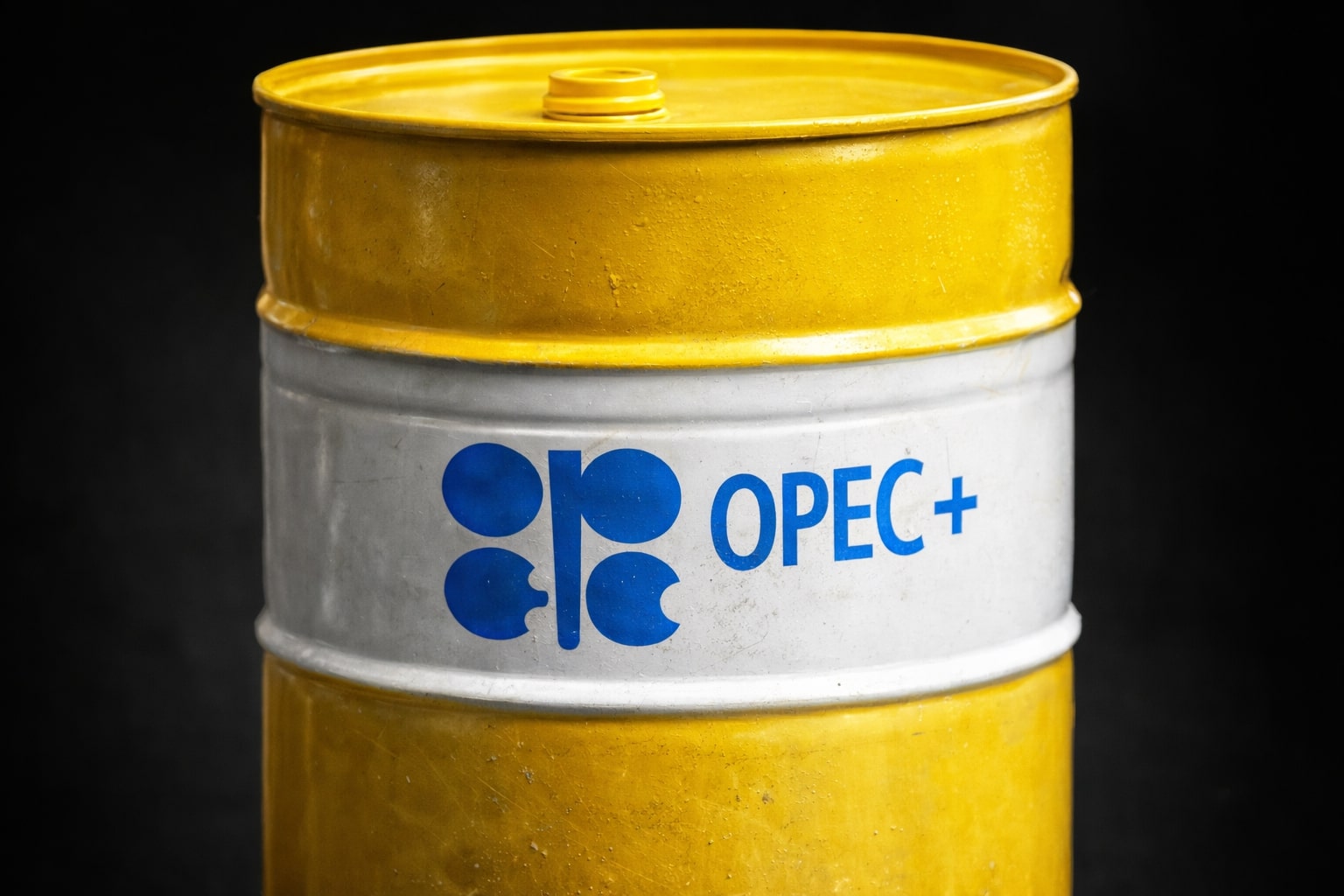
Oil Falls to $67 as Supply Surges, Iran Tensions Anchor WTI Near $64
U.S. builds pressure with 3.8M barrel stockpile jump, OPEC+ signals fresh output, but Middle East risks and falling rig counts may limit downside | That's TradingNEWS
Crude Inventory Surge Undermines Price Stability
Crude oil prices came under immediate pressure following the release of U.S. Energy Information Administration data confirming a 3.8 million barrel inventory build. This surprise increase in stockpiles—sharply diverging from forecasts calling for a 1.8 million barrel draw—triggered selling pressure across both major benchmarks. West Texas Intermediate (CL=F) dropped to $67.00 per barrel, while Brent (BZ=F) declined to $68.62, down from earlier closes of $66.75 and $68.88, respectively. This weakness was compounded by a simultaneous 4.19 million barrel surge in gasoline inventories, nearly five times the expected 900,000 barrel build.
WTI (CL=F) Shows Bottoming Behavior Despite Supply Pressure
While near-term price action appears bearish, technical momentum indicators are beginning to flash early signs of bottoming. The 4-hour RSI for WTI crude remains comfortably above 50, and the commodity is holding above $64.00 support. A confirmed breakout above the $67.00 resistance—corresponding to the June 24 and July 2 intraday highs—would validate the bottoming thesis. A subsequent move toward $68.85, the 38.2% Fibonacci retracement of the June selloff, and ultimately $70.00, which aligns with the 50% retracement zone, is technically plausible.
Conversely, failure to hold above the $64.00 floor exposes downside risk toward the June 6 low of $62.20. While the short-term setup is constructive, traders remain jittery amid conflicting macro signals.
Iran’s Nuclear Escalation Reignites Geopolitical Risk Premium
Iran’s abrupt suspension of cooperation with the IAEA rattled global energy markets. President Masoud Pezeshian’s approval of legislation to halt inspections stoked fears of a renewed nuclear crisis, pushing crude prices sharply higher midweek. The surge, however, was not sustained due to the offsetting drag from the EIA build. The dual narrative—geopolitical risk versus oversupply—continues to create intraday volatility across CL=F and BZ=F.
Adding fuel to the fire, the U.S. Treasury rolled out fresh sanctions on both Iran and the Hezbollah network, further escalating Middle East tensions. The oil market, however, appears to be discounting the effectiveness of these measures based on past ineffectiveness, with traders now awaiting concrete retaliatory action.
OPEC+ Output Strategy Complicates Supply Picture
The upcoming OPEC+ meeting is expected to result in a formal endorsement of an additional 411,000 bpd production hike in August. This follows the group’s existing strategy to gradually unwind the two-year production cap of 2.2 million bpd. Saudi Arabia’s signaling of further output increases—meant to discipline overproducers such as Kazakhstan and Iraq—is putting a ceiling on crude prices, even as supply tightness concerns rise due to Canadian wildfires near Fort McMurray oil sands.
Russia’s openness to further hikes and OPEC’s June output increase of +360,000 bpd to 28.1 million bpd (a 1.5-year high) adds another layer of bearish supply overhang. Yet, the broader strategy remains murky, especially with full restoration of OPEC+ cuts now pushed to September 2026, extending the balancing act.
Dallas Fed Survey Signals Shale Retrenchment
The Dallas Federal Reserve’s latest energy sector report confirms what rig count data already implies: a broad deceleration in U.S. shale activity. Oil production index dropped to -8.9, while natural gas plunged to -4.5 for Q2, reversing earlier gains. 42% of large producers expect reduced drilling in the near term, with U.S. energy policy, tariffs, and trade tensions cited as structural barriers to investment.
The Baker Hughes rig count corroborates this pullback: active U.S. oil rigs fell by 6 last week to 432, the lowest since 2021 and down from 627 in December 2022. These figures indicate subdued forward production capacity, offering potential long-term support to CL=F and BZ=F despite near-term headwinds.
Demand Outlook: Gasoline Travel and China Slowdown Diverge
Demand signals remain fragmented. On one hand, the American Automobile Association projects a record 61.6 million U.S. drivers over the July 4th week—a 2.2% increase YoY—pointing to gasoline consumption strength. On the other hand, China’s services sector slowed to a 9-month low, raising questions about sustained demand from the world’s largest oil importer.
The contradictory nature of global demand trends continues to create uncertainty, but the seasonal tailwind of U.S. driving activity offers limited support for gasoline futures (RBQ25), which are down -0.69% on the session.
Tariff Uncertainty Looms Ahead of July 9 Deadline
President Trump’s 90-day delay on implementing retaliatory tariffs expires on July 9, with no finalized trade deals with the EU or Japan. This binary risk event could materially impact demand sentiment, especially if global supply chains face renewed friction. The U.S.-Vietnam trade deal—imposing 20% tariffs—momentarily lifted sentiment, but markets remain focused on the broader tariff gridlock.
Historical responses to similar policy noise suggest that CL=F tends to discount posturing until hard sanctions or trade restrictions are implemented, at which point re-pricing becomes aggressive and fast.
Crude Tanker Storage Decline Offers Supply-Side Relief
Data from Vortexa shows that floating crude storage (tankers stationary for 7+ days) fell by 8.7% w/w to 80.22 million barrels, providing a short-term supply relief narrative. This drawdown, while marginal relative to broader inventories, provides incremental support to physical oil prices and underscores ongoing delivery flow rather than hoarding behavior.
BUY/SELL/HOLD VERDICT: OIL (CL=F, BZ=F)
Despite current bearish weight from U.S. stockpile builds and OPEC+ policy direction, the combination of tightening U.S. rig activity, rising geopolitical volatility, and signs of technical bottoming favors a short-term speculative BUY on WTI (CL=F) with tight stops below $64.00. For Brent (BZ=F), the setup is more neutral due to lower geopolitical risk exposure and Asia demand softness—Hold.
Short-term resistance levels at $68.85 and $70.00 offer upside targets, but lack of clarity on tariffs and OPEC+ cohesion caps the medium-term bullish thesis. If Trump’s tariff deadline results in full enforcement, the demand shock could reverse gains. Positioning must remain dynamic.
As of now, CL=F speculative BUY, BZ=F HOLD.
That's TradingNEWS
Read More
-
SPYI ETF at $52.59: 11.7% Yield, 94% ROC and Near S&P 500 Returns
04.01.2026 · TradingNEWS ArchiveStocks
-
XRPI and XRPR Rally as XRP-USD Defends $2.00 on $1.2B XRP ETF Inflows
04.01.2026 · TradingNEWS ArchiveCrypto
-
Natural Gas Price Forecast: NG=F Eyes $4.30 if Storage Draws Tighten
04.01.2026 · TradingNEWS ArchiveCommodities
-
USD/JPY Price Forecast - USDJPY=X at 156.91: 157.75 Breakout Sets 160 Target as Fed Jobs Week Tests The Dollar
04.01.2026 · TradingNEWS ArchiveForex



















